Since it is the holiday season, ’tis also the season for holiday parties!
As part of our quest to find holiday-centric recipes from around the world, we also figured it would be a fun idea to find inspiration for bringing the holiday cheer to the bellies of your party guests.
For today, as part of this pursuit of the fantastically festive finger foods, we found the perfect place to start: yalanci sarma.

What is Yalanci Sarma?
Yalanci sarma has a confusing meaning when literally translated into English. In Turkish, the word yalanci means “fake” and sarma means “wrapped.” Put together, this is therefore technically a recipe for “fake wraps.”
In order to understand what this actually means and why yalanci sarma is called what it is, let’s dive into its root cuisine, Armenian and its regional influences.
Armenian cuisine in general belongs to a larger family of Caucasian cuisines, or those communities in and surrounding the Caucasus Mountains between the Black Sea and the Caspian Sea. Fellow “family members” to Armenian cuisine include the Persian, Turkish, Arabic, Georgian and Greek cuisines.
For each of these food cultures, a very unique ingredient used is the grape leaf, which are picked fresh from the grapevine and are used as a highly nutritious wrapper for various types of stuffings and rice. It certainly helps that the grape leaves themselves are excellent sources of fiber, vitamin A and vitamin K.
Most commonly, these grape leaves are used to make dolmas, or grape leaves stuffed with rice, minced meat, vegetables and perhaps some grains. Each cuisine around the Caucasus and from the old Ottoman Empire has their own variant on the dolma, but all of them will have some form of grape leaf with meaty rice stuffing.
In Turkish, dolma means “stuffed,” so dolma sarma implies you’re eating “stuffed wraps.” Because the meaty dolma recipe was so common, when the vegetarian version of yalanci sarma came along, it got its dubious label of “fake.”
Rest assured, though, that this recipe is real. And really good.
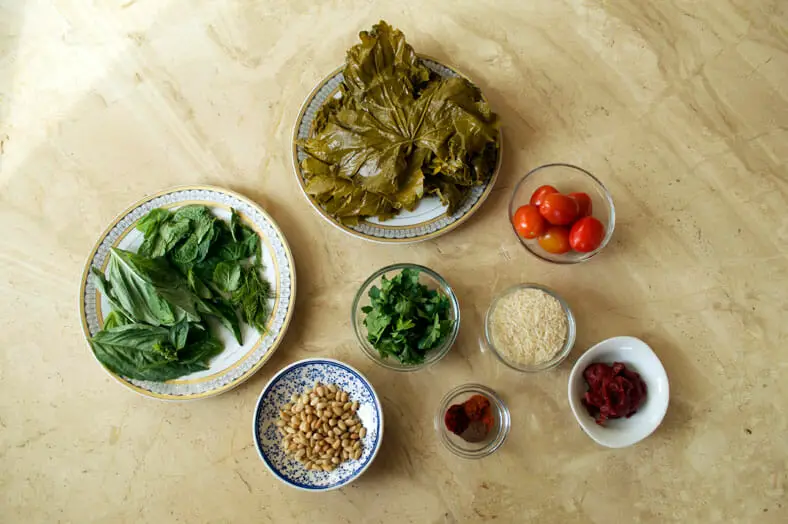
About the Recipe
Because of the time it takes to make them, both dolma and yalanci are cornerstone foods for more special and festive occasions in the Armenian household. Christmas, New Years, and the Easter Feast might be three such occasions.
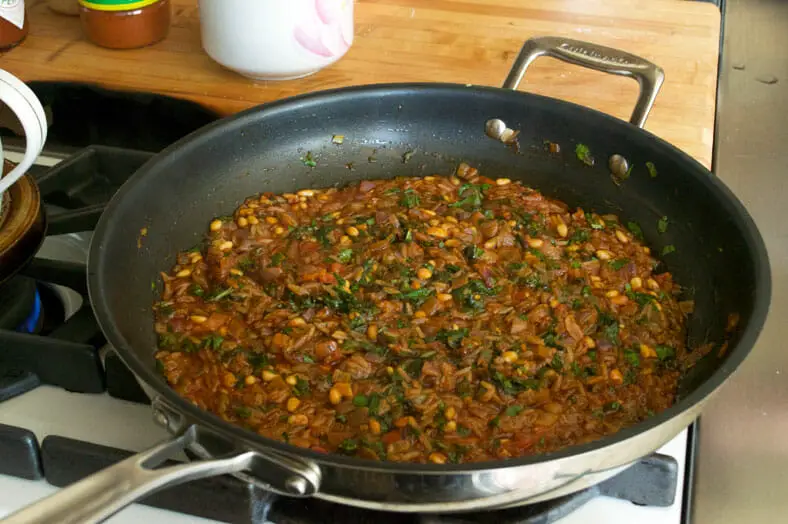
Making the stuffing for the yalanci itself isn’t particularly difficult. Preparation of the ingredients is straightforward, and you combine all the ingredients at once (with the exception of onions slightly beforehand) to simmer together. It’s important that they stay on a simmer, however, so that each ingredient retains its individual flavor profile to a certain extent. Also, this allows the rice to stay slightly uncooked before cooking fully within the grape leaf.

The art of making yalanci is really in wrapping the grape leaf around the stuffing. The motion of wrapping the grape leaf itself can be easily understood, but the key to yielding a really beautiful and tight roll comes in the first tuck of grape leaf under the filling set in the center of the leaf.

After you’ve placed and shaped the filling in the middle, you’ll take the bottom parts of the grape leaf and pull them towards the stuffing to tuck them under. Depending on how well you can tuck the leaf under the stuffing, your grape leaf will either cook beautifully or might come undone during the boiling process.

Our Take on the Recipe
One thing we noted in our research of the recipe is how truly diverse the methods and approaches are to making yalanci. One recipe you’ll find might have an entirely different set of steps from another recipe found online, and the rules of thumb will be completely different. Yet you end up with the same delicious end result!
We referenced this original recipe from The Armenian Kitchen for our own cooking because it was the most straightforward to execute, but we made plenty of adjustments based on the suggestions of other recipes.
For one, we added a ton of extra herbs than were used in the original recipe. Armenian cuisine is relatively sparing in its use of spices but relies very heavily on fresh herbs for flavor, so our version of the recipe incorporates more herbs that are common to Armenian recipes. Herbs like parsley, mint, and basil were added in hearty amounts.
Next, in lieu of currants that are added to some yalanci, we added pine nuts and diced cherry tomatoes to give greater substance to the filling itself.
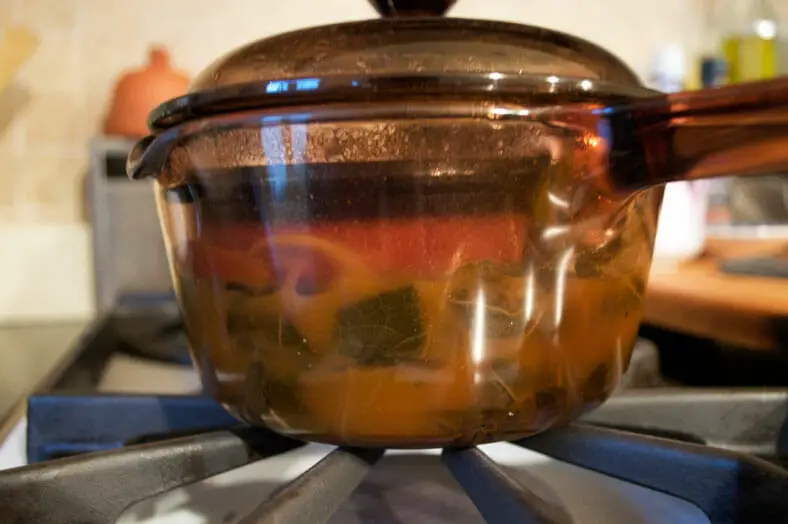
Finally, we opted to boil our yalanci in lemony water instead of baking them. Baking them is a perfectly good way to go and the end result is also delicious, but boiling gave our yalanci more moisture and flavor to the grape leaf itself.
Et voila! What you get from this recipe is the perfect small yet elegant looking appetizer to serve your guests that will have them raving about the food just as much as the celebratory atmosphere.
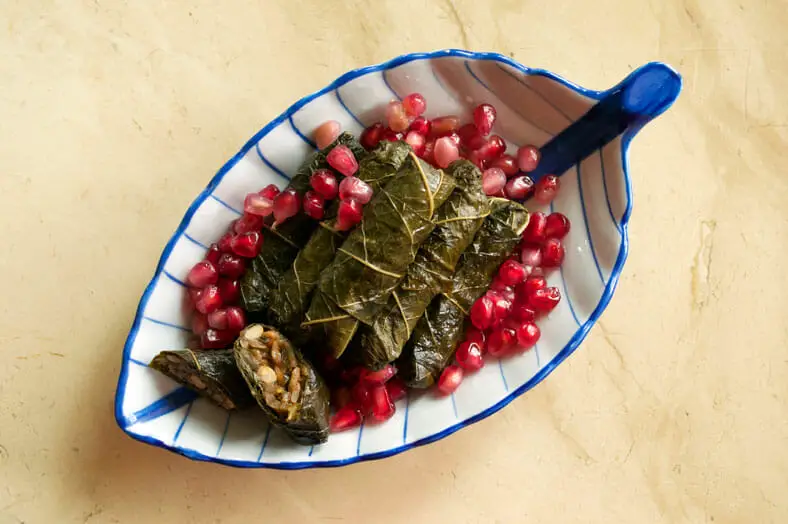
Have you made yalanci before? What tips do you have for rolling the grape leaves? Comment below!

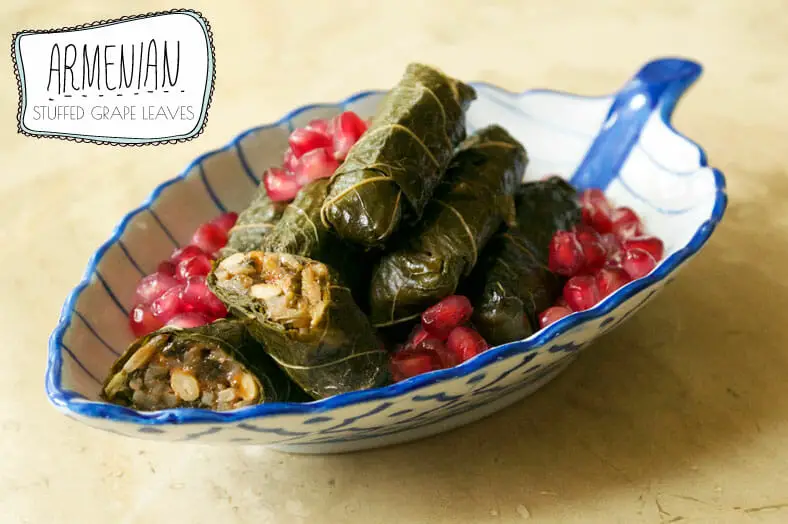
1 thought on “Yalanci Sarma: Armenian Stuffed Grape Leaves”